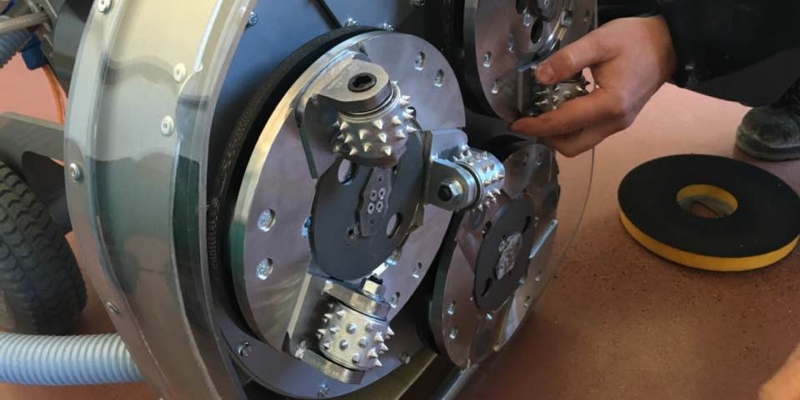The bush hammer tool is a specialized piece of equipment renowned for its ability to texture and prepare surfaces. Its unique design, featuring numerous conical or pyramidal points on a rotating head, makes it an invaluable tool across various industries. From construction to restoration, the bush hammer tool’s applications are diverse, enhancing both the functionality and aesthetics of surfaces.
In the realm of concrete finishing, the bush hammer tool is a widely used to create a textured surface that not only improves the material’s visual appeal but also significantly enhances its functional properties. One of the primary benefits of hush hammered concrete is its increased slip resistance, which is crucial in public spaces such as walkways, patios, and pool decks. By producing a uniformly rough texture, the bush hammer bits ensure that surfaces are safer, especially in areas prone to moisture. Additionally, this textured finish serves as an excellent preparatory step for applying coatings or overlays, promoting better adhesion and durability.
Architectural restoration projects also greatly benefit from the use of bush hammered concrete tool. Historical buildings often feature intricate stone textures that are difficult to replicate with modern methods. The bush hammer allows restoration professionals to accurately mimic these textures, ensuring that repairs blend seamlessly with the original architecture. This capability is particularly important for preserving the historical and cultural significance of heritage structures. The precision of the bush hammer tool ensures that the restored surfaces match the original workmanship, maintaining the building’s authenticity.

In road construction, the bush hammer tool plays an important role in enhancing safety. Texturing concrete road surfaces with a bush hammer improves vehicle traction, particularly in wet conditions, thereby reducing the risk of accidents caused by slippery roads. The roughened surface created by the bush hammer also aids in water drainage, preventing water from pooling on the road and reducing the likelihood of hydroplaning. Furthermore, bush-hammered surfaces can help reduce tire noise, contributing to a quieter driving experience and enhancing overall road comfort.
The bush hammer tool’s applications span across various industries, demonstrating its versatility and effectiveness in enhancing surface properties. Its ability t deliver consistent and uniform textures makes it a valuable asset for professional aiming to achieve both functional and aesthetic goals.